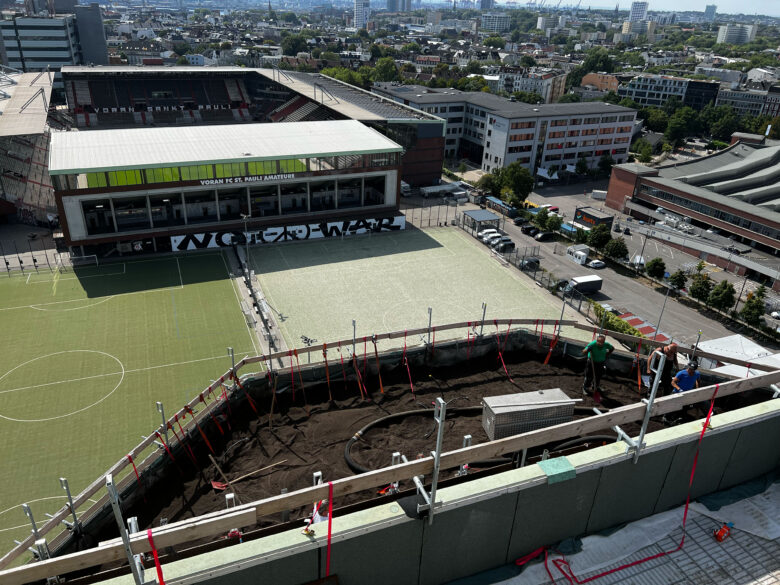Green Bunker St. Pauli: Planting moves closer
4,700 plants will soon turn the St. Pauli bunker into a spectacular natural oasis: More than 7,600 square meters of public green and communal areas are being created above the roofs of the Hanseatic city, with an additional 1,400 square meters of facade area and an approximately 300-meter-long “mountain path” being planted.

On the south side of the bunker, areas are first filled with substrate.
Now an important step is imminent: in the next few weeks, the planting of the gray colossus will begin. The exact start date also depends on the weather. But already a total of 2,000 cubic meters of special substrate, consisting of lava and organic materials, for the trees, shrubs, hedges and climbing plants are being blown from silo trucks to a height of more than 50 meters.

The mixture of lava and organic matter is blown onto the bunker through hoses.
In times of climate change, the planting of the Bunker St. Pauli has a model function for projects of a similar kind all over the world. After all, heat waves, droughts, heavy rainfall and air pollution also affect international metropolises in particular. The interest in practical experience is immense. To provide scientific evidence of the effects of greening, sensors have been installed throughout the bunker to record data such as evaporative cooling and thermal insulation for five years. Climate experts from the TU Berlin are evaluating the data to precisely record the climatic effects on the building and the microclimate in the neighborhood and make them available to future international projects.

Depending on the location and plant species, the substrate depth is about 30-80 cm.
Text/Photo: Frank Schulze Kommunikation


Comments are closed.